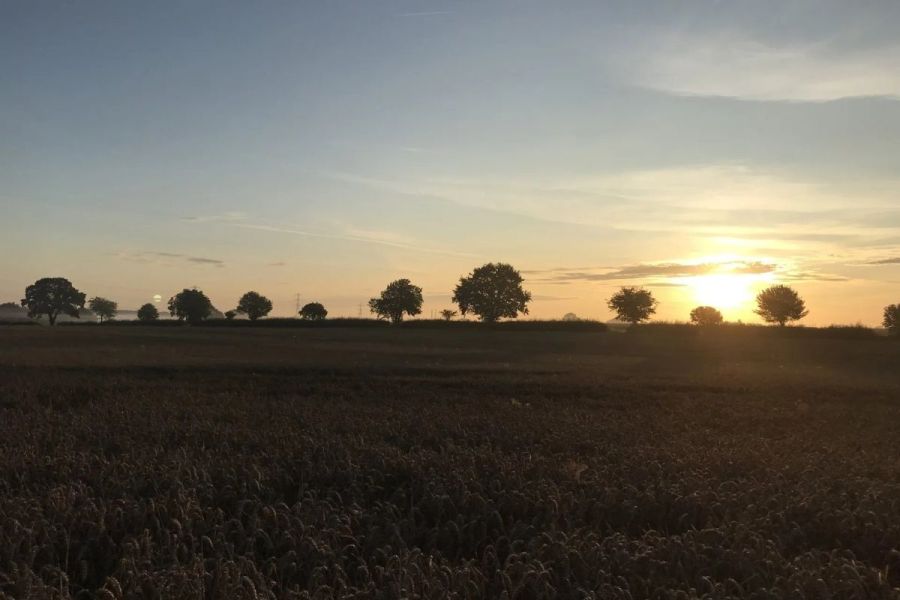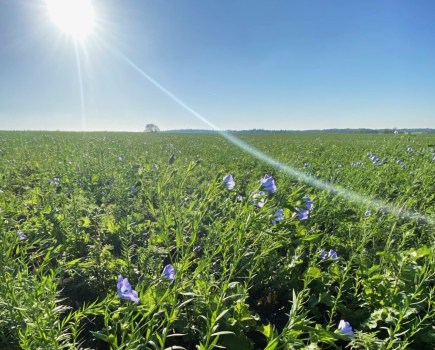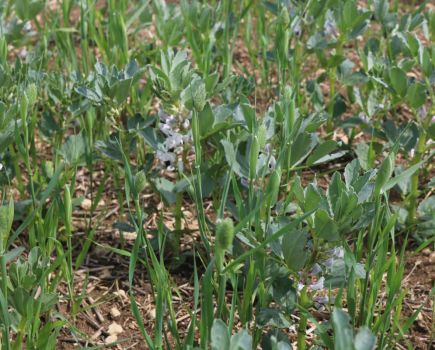A farmer in South Staffordshire is proving that a system doesn’t require a label to achieve great things for nature and the environment, while meeting productivity goals. CPM meets Tim Parton.
“My aim for the rotation is of course top yields, but achieved through the most economical way and in harmony with nature.”
By Janine Adamson
On meeting Tim Parton, one thing he’s keen to stress is that he’s not a low-input farmer. Although others have bestowed that title on him in the past, he says he’s not afraid to invest in his crops, but what he does choose is with nature in mind.
“We use alternative inputs to protect the crop naturally. It’s not about doing nothing, you have to work hard to create a balanced, healthy plant which performs from a yield perspective.”
Some might argue that South Staffordshire isn’t exactly famed for block buster arable yields, but Brewood Park Farm which is located just north of Wolverhampton, is striving to quash that reputation.
Tim has been farm manager for around 20 years and previous to that, the role was undertaken by his father. Boasting 300ha, the site is already punching well above its weight compared with the average size of a West Midlands farm – which is just 66ha.
And there’s much more to this agricultural business than might be expected given its location, for one, there’s no livestock. “We used to graze two-thirds of our cover crops but realised that in the arid springs we’ve been having of late, the soil was drying out and heating up much quicker because it was exposed.
“So we don’t graze them anymore because it doesn’t work for us on this site. I’ve not ruled livestock out completely, but it’s more about using them as a tool, for example, to knock back forward crops. There has to be flexibility,” he explains.
Tim’s approach centres around soil biology and conservation agriculture. In many ways, he says he’s become tired of the ‘R’ word (regenerative) and it isn’t something he’d necessarily use to describe himself anymore.
He highlights that soil health has always been his focus, mainly due to it being farming’s most valuable finite resource. But rather than taking a drastic leap, his move towards no-till has been gradual.
“Back when I took on the role of farm manager, we were operating a plough/min-till system which included sugar beet in the rotation. I knew it wasn’t possible to make an extreme shift, so in 2009 we moved to using a strip-till which proved a helpful transition to keep the soil aerobic.
“This allowed my soils to transition at the same speed as me, the biggest barriers are normally between your two ears,” explains Tim.
Having made that a success, his next focus was on input use, trialling reducing nitrogen applications by 40kgN/ha in 2012. He says the purpose was to free up budget so he could invest in N-fixing bacteria. “The air that we breath is 70% nitrogen – why buy it when we can fix it for free?
“Where we used the N-fixing bacteria and a reduced rate of nitrogen, there was always a yield uplift in the crop of around 1t/ha. Having witnessed that on the farm, my interest in biology really took off,” he comments.
In 2015, Tim finally had the confidence to go no-till with the aim of achieving a more fungal soil. He modified his John Deere 750 drill, purchased a liquid applicator for drenches and started to buy in microbes which he could brew up and multiply for a biological approach to crop protection.
Among his ingredients, he uses N-fixing bacteria and P-solubilising bacteria, Trichoderma saprophytic fungi, Bacillus subtilis (probiotic bacteria) and Bacillus amyliqafacien. He also champions calcium which he coins ‘the king of nutrients’. “Calcium is the carrier of other nutrients and one of its purposes is to strengthen cell walls which helps to stop pathogens from infiltrating the plant,” says Tim.
To that end, he also uses silicon, to increase the crop’s natural armour which he says is useful in fighting off pest damage from the likes of slugs and aphids while eradicating the use of PGRs.
Through engaging with the biology in the soil and improving plant health, Tim hasn’t used insecticides for nine years. He says key to this has been avoiding sugar spikes in the crop which are appealing to feeding pests: “It’s ensuring the sugars are converted to indigestible amino acids which are useful to the plant but not to the pest.”
Furthermore, he hasn’t used fungicides for four years. “Potassium silicate has helped to overcome a lot of disease pressure, especially yellow rust. We’ve also trialled Bacillus subtilis and Bacillus amyliqafacien as a natural fungicide which has been shown to control brown rust on the farm, as well as fusarium.
“Disease is often down to a nutrition inadequacy and as a result, we’ll eventually get to a place where it’s all successfully controlled by nutrition,” explains Tim.
Equally, he’s an advocate of taking a foliar approach to applications. “I believe uptake is more efficient when it’s through the leaf, especially with nitrogen. It’s a nutrient which is agriculture’s best friend and enemy, but we can’t farm without it,” he adds.
With all of these ingredients to hand, Tim creates his ‘biological brews’ inside the farm’s sheds due to UV sensitivity, brewing for up to 24hrs using heated water. “You could say I’m addicted to brewing,” he laughs. “We brew our own compost too, with the aim of rectifying damage to the soil.”
So what is Tim actually growing? Contrary to most rotations, Tim starts by listing cover crops. “They’re at the heart of the rotation because they capture sunlight and transfer energy into the soil, cycle carbon and increase respiration. The plant talks to the soil biology and the biology releases what’s required for a healthy crop, planet and people,” he explains.
Then, for the cash crops, the farm grows a mix of milling wheat, winter oilseed rape, spring malting barley, spring beans, spring lupins, spring oats, grass for the local haylage market, camomile and corn marigold. The latter two being grown for seed for the Green Farm Collective of which Tim is a director and founding member.
“My aim for the rotation is of course top yields, but achieved through the most economical way and in harmony with nature. Diversity above and below ground is important – nature doesn’t want a monoculture or monocrop,” says Tim.
“To stay on the right track, I SAP test every 10-14 days during the season to check that the plant has what it requires.”
Although he’s avoided most synthetic plant protection products for some time, he admits he sometimes uses herbicides. “We’ll use glyphosate before drilling but then use the cover crops to help control weeds. Glyphosate is a great tool but has to be used carefully. In our instance, we’ll add elements such as citric acid, fulvic acid and molasses in with the glyphosate to help the soil to bounce back.
“But I tend to use a crimper roller on the cover crops when it comes to destruction to help reduce reliance on that chemistry; I don’t believe in using glyphosate to desiccate crops either.”
Knowledge transfer demands a lot of Tim’s time these days, with regular public speaking engagements around the world and upkeep of his consultancy website (https://www.timpartonfarming.com/). He’s also working with different organisations and companies to host on-farm trials, which he says is useful when evaluating whether to roll out certain technologies.
Notably, he’s about to host an open day for the Green Farm Collective on 22 May, following last year’s event which took place at Michael Kavanagh’s farm in Shropshire.
Tim says the Green Farm Collective was established by farmers for farmers, to facilitate the trading of carbon, natural capital and assured ‘regen’ produce. “Premiums are paid back to farmers at above the market rate, as long as criteria are met during the auditing process.
“Farmers should be rewarded for the good they can do in producing nutrient-rich food while also healing the planet in which we live. To me, farmers are the heroes of the world as it’s only us that can offer that package and we should be very proud of what we can achieve on a daily basis,” he concludes.
Since CPM produced this article, Tim has sustained life-changing injuries as a result of an on-farm accident. If you’d like to support Tim and his family as they navigate the months ahead, please follow this link.
This article was taken from the latest issue of CPM. Read the article in full here.
For more articles like this, subscribe here.
Sign up for Crop Production Magazine’s FREE e-newsletter here.




